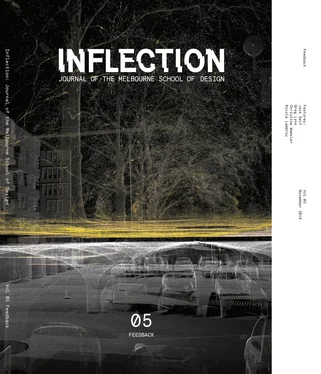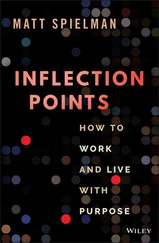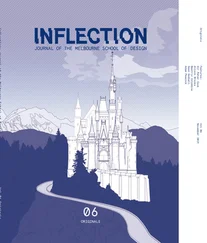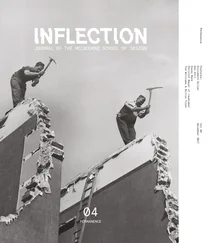Not all improvisational comedy works the same way, so it’s important to be clear for this proposal. A common misconception is that improv happens by accident, but the most enduring and popular formats are in fact hemmed in by clear boundaries. Chicago-style improv, in particular the ‘Harold’, a format developed in the 1960s and ’70s by improvisational theatre groups like Second City and Improv Olympic teams in Chicago, is particularly instructive as a model for design collaboration because it provides a very specific minimum amount of framework to both support the kind of wild creativity IDEO’s brainstorm rules call for and at the same time ensure resolution. The Harold typically starts with a quick warm up game based on a topic of the audience’s suggestion and is followed by a series of spontaneous unrelated scenes that are, with a few more rounds, brought together to a coherent and often surprising conclusion. As performer and comedy historian Rob Kozlowski tells it, “like the television show [Seinfeld], in a Harold three disparate stories recur in a three-by-three structure (three scenes each appearing three times) before ultimately converging in the end. The humour comes out of the ways in which the themes, characters and stories connect and combine, rather than from jokes.” 13 Del Close, who developed the format, “thought of the Harold as a sonata form. Themes would be established, a group of characters would return again and again in scenes and then the scenes would work off one another.” 14 The important element here is that closure is built into a process that begins with radical openness.
Taking it a step beyond brainstorming at IDEO, which serves to get as many ideas on the wall as possible but doesn’t say what to do with them once they’re there, the Harold empowers individual performers to develop quick scenes out of an initial brainstorm and encourages their teammates to jump on board. The strength of the Harold, and improvisation generally, is that once a piece of information has been established within a scene, all participants are required to accept it as true and to move forward. All performers are equal in their ability to affect and direct a scenario. As described by Matt Fotis, “improvisation is a system of creativity, a mindset that focuses on the cooperation of a group of players to create completely original performances based on set structures and rules that can be performed spontaneously in front of an audience (performance based) or used as a means for generating material.” 15 By establishing an additive process, hierarchies in architectural office structures that normally govern editing are rendered moot, perhaps happily so. Per Del Close’s fifth rule: “Your prime responsibility is to support.” 16
Thinking through the production of architecture and architectural ideas with the help of the Harold provides a framework whereby collaboration and radical acceptance is productive. It isn’t cynical to invite negative externalities into a comprehensive view of the design process, it’s realistic. The Improv model considers all inputs equally valid. When mapped onto an architectural process, things like building codes, client demands, budget and climate can all be assimilated into a coherent worldview and viewed as similarly unproblematic. By conceiving of design as a performance, as a process with rules and strategies for all involved, it can become the consciously collaborative act Cedric Price and Matrix were aiming for. Per Close’s first rule, every collaborator is a supporting actor.
The sudden ubiquity of architecture work-sharing tools like Revit is undertheorized and presents an opportunity to inject improvisation’s collaborative ambitions directly into an office’s workflow. The repetitive act of ‘Saving to Central’ when changes made to a local version of a file are pushed back to a shared master file is the contemporary version of “calling a scene” in the Harold—exercising judgment to determine when a collective act has found its end and when personal insight returns to collective knowledge. The software already has the “yes, and” mentality of building upon a collaborator’s work—it pulls up an error message when conflicting information is pushed into the central model—so establishing collaborative processes like analogues to the Harold within office hierarchies is within reach. Freud’s third person might be sitting right next to you; architecture might best be produced when its processes are intentional when collaboration integrates its own feedback loop, when the performance of work is the objective in and of itself.
The effect of embedding these principles, following architect David P. Brown’s call for a jazz-like design process, “does transform, shift and expand architecture practice from an emphasis on the design of objects to an emphasis on the coordination and manipulation of resources, including the production of objects, to facilitate access to processes.” 17 Allowing for looseness in the generation of a design might provide for looseness in using it too.
01Sigmund Freud, “Jokes and Their Relation to the Unconscious,” trans. James Strachey (New York: W. W. Norton, 1960).
02Keller Easterling, “A Short Contemplation on Money and Comedy,” Thresholds 18: Design + Money (1999): 15.
03Ibid., 16.
04Daniel Belgrad, “Improvisation, Democracy, and Feedback,” George E. Lewis & Benjamin Piekut, eds. The Oxford Handbook of Critical Improvisation Studies, Volume 1 (New York: Oxford University Press, 2016), 289.
05Stanley Mathews, “The Fun Palace as Virtual Architecture: Cedric Price and the Practices of Indeterminacy,” Journal of Architectural Education, Vol. 59, No. 3 (February 2006): 39.
06Ibid., 41.
07Ibid., 46.
08Janie Grote, “Matrix: A Radical Approach to Architecture,” Journal of Architectural and Planning Research, Vol. 9, No. 2, Special Issue: Women’s Voices in Architecture and Planning (Summer, 1992): 160.
09Ibid.
10Ibid., 161.
11Ibid., 164.
12IDEO Rules for Brainstorming provided by IDEO/ Devin Peek via email, 23 April 2018.
13Matt Fotis, Long Form Improvisation and American Comedy: the Harold (New York: Palgrave Macmillan, 2014), 6.
14Rob Kozlowski, The Art of Chicago Improv (Portsmouth, NH: Heinemann, 2002), 28.
15Fotis, 5.
16Cited in Fotis, 7. Del Close’s eleven rules for performing a Harold:
•You are all supporting actors.
•Always check your impulses.
•Never enter a scene unless you are needed.
•Save your fellow actor; don’t worry about the piece.
•Your prime responsibility is to support.
•Work at the top of your brains at all times.
•Never underestimate or condescend to your audience.
•No jokes (unless it is tipped in front that it is a joke).
•Trust … Trust your fellow actors to support you; trust them to come through if you lay something heavy on them; trust yourself.
•Avoid judging what is going down except in terms of whether it needs help (either by entering or cutting), what can best follow, or how you can support it imaginatively if your support is called for.
•LISTEN!
17David P. Brown, Noise Orders: Jazz, Improvisation, and Architecture (Minneapolis, MN: University of Minnesota Press, 2006), (xvi).
WITH GREAT POWER…
A CONVERSATION WITH JACK SELF
REAL Foundation, Glass House, 2017. Rendering. Image reproduced with author’s permission.
Jack Self is a prolific architect, editor and author based in London. He is Director of REAL Foundation, a cultural institute and architectural practice notable for its critical approach to architecture and design, informed by a deep engagement with politics, philosophy and economics.
With design studio OK-RM, REAL Foundation were responsible for the British Pavilion at the 15th Venice Architecture Biennale in 2016, entitled Home Economics. In the years since, they have designed gala openings, museum exhibitions and mortgage products. To date, they have published six issues of the magazine REAL Review as well as the collection of essays Real Estates.
Читать дальше












